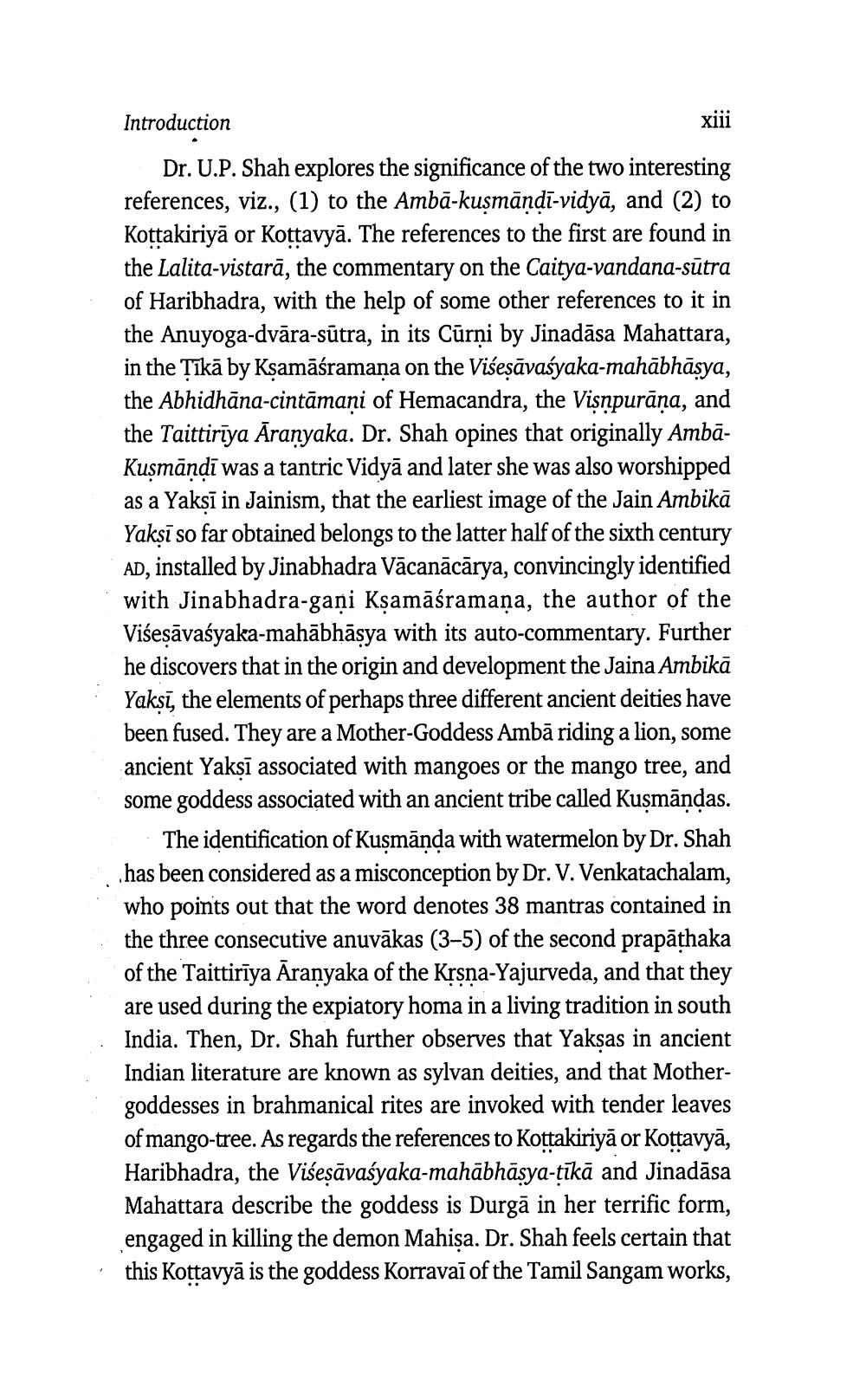________________
xiii
Introduction
Dr. U.P. Shah explores the significance of the two interesting references, viz., (1) to the Ambā-kuşmāņdī-vidyā, and (2) to Kottakiriyā or Kottavyā. The references to the first are found in the Lalita-vistarā, the commentary on the Caitya-vandana-sūtra of Haribhadra, with the help of some other references to it in the Anuyoga-dvāra-sūtra, in its Cūrņi by Jinadāsa Mahattara, in the sīkā by Kșamāśramana on the Višeşāvaśyaka-mahābhāsya, the Abhidhāna-cintāmaņi of Hemacandra, the Visnpurāņa, and the Taittirīya Aranyaka. Dr. Shah opines that originally AmbāKuşmāņdī was a tantric Vidyā and later she was also worshipped as a Yaksī in Jainism, that the earliest image of the Jain Ambikā Yakşī so far obtained belongs to the latter half of the sixth century AD, installed by Jinabhadra Vācanācārya, convincingly identified with Jinabhadra-gani Ksamāśramana, the author of the Višesāvaśyaka-mahābhāsya with its auto-commentary. Further he discovers that in the origin and development the Jaina Ambikā Yaksī, the elements of perhaps three different ancient deities have been fused. They are a Mother-Goddess Ambā riding a lion, some ancient Yaksī associated with mangoes or the mango tree, and some goddess associated with an ancient tribe called Kuşmāndas.
The identification of Kuşmānda with watermelon by Dr. Shah has been considered as a misconception by Dr. V. Venkatachalam, who points out that the word denotes 38 mantras contained in the three consecutive anuvākas (3-5) of the second prapāthaka of the Taittirīya Āranyaka of the Krsna-Yajurveda, and that they are used during the expiatory homa in a living tradition in south India. Then, Dr. Shah further observes that Yaksas in ancient Indian literature are known as sylvan deities, and that Mothergoddesses in brahmanical rites are invoked with tender leaves of mango-tree. As regards the references to Kottakiriyā or Kottavyā, Haribhadra, the Višeşāvasyaka-mahābhāsya-tīkā and Jinadāsa Mahattara describe the goddess is Durgā in her terrific form, engaged in killing the demon Mahișa. Dr. Shah feels certain that this Kottavyā is the goddess Korravaī of the Tamil Sangam works,




